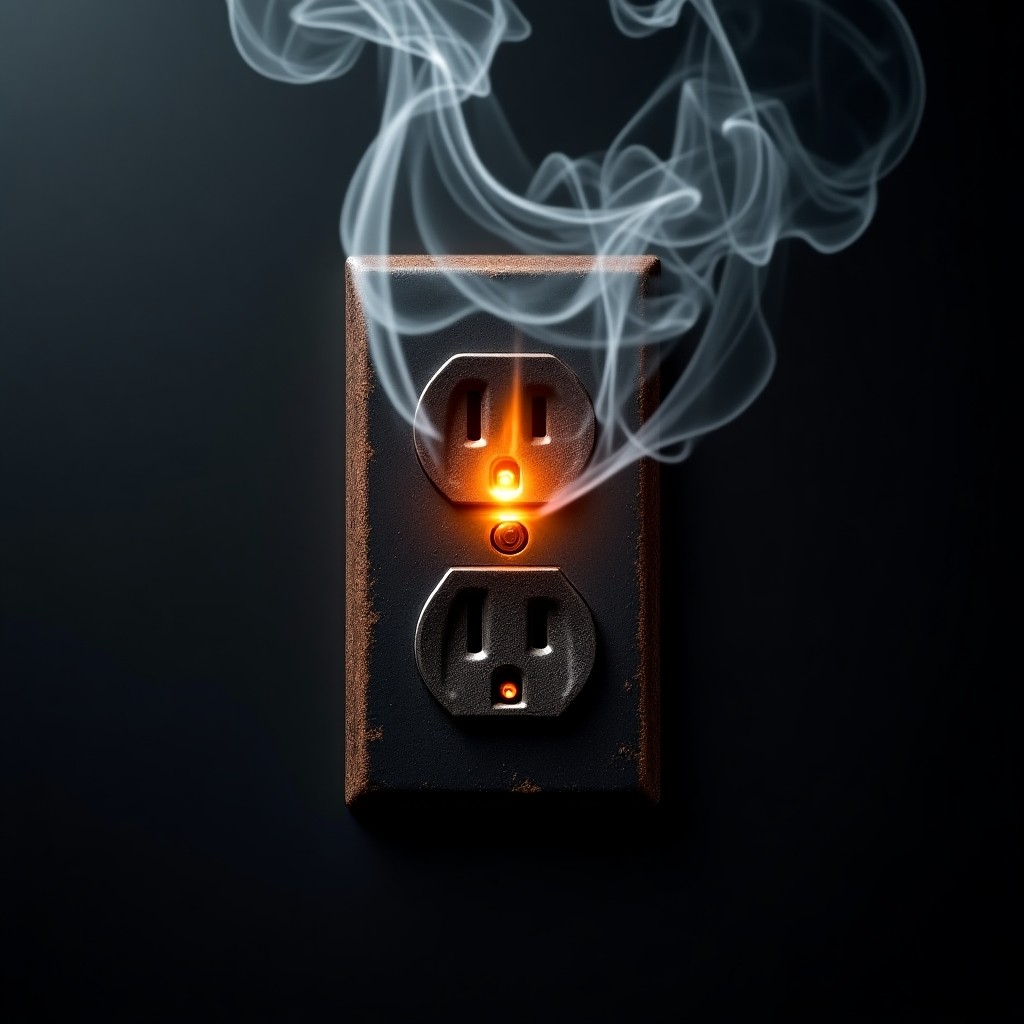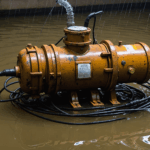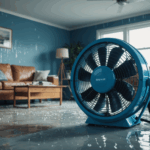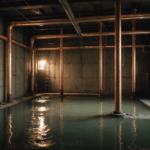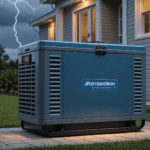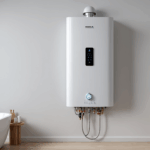Detecting electrical surges early can prevent costly damage to your appliances and ensure proper home protection. The most obvious indication is when multiple electronic devices shut down simultaneously or require resetting after a brief power interruption. Pay attention to devices that suddenly stop working or exhibit unusual behavior, as these could be casualties of power surges.
Common warning signs that your home is experiencing power surges include:
- Flickering or dimming lights, especially when large appliances turn on
- Electronic devices resetting or losing programmed settings frequently
- Burning odors around outlets or switches
- Discolored or blackened electrical outlets
- Electronics failing prematurely or behaving erratically
- Circuit breakers tripping repeatedly
The severity of surge damage can be assessed using this classification table:
| Surge Intensity | Observable Signs | Potential Impact |
| Minor | Flickering lights, device resets | Temporary disruption, minimal damage |
| Moderate | Device malfunction, burning smells | Component damage, reduced device lifespan |
| Severe | Smoke, sparks, immediate device failure | Complete device destruction, fire hazard |
Regular electrical maintenance can help identify surge-related issues before they become severe. If you notice any of these signs, it’s crucial to document when and how frequently they occur. This information will be valuable for electricians diagnosing the problem and implementing appropriate solutions. Keep in mind that some signs might be subtle at first but can escalate quickly if left unaddressed.
Testing outlets with a voltage meter can reveal whether your home experiences frequent voltage fluctuations. Modern surge monitors can also be installed to track and record surge events, providing valuable data for preventing future occurrences and maintaining optimal home protection measures.
Sources of power surges in homes
Understanding what causes power surges within your home is crucial for implementing effective protection strategies. Internal sources often contribute significantly to electrical disturbances, and identifying them is the first step toward prevention.
Here are the primary internal sources of power surges:
- High-Power Appliances
- Air conditioners and refrigerators cycling on and off
- Electric dryers and washing machines
- Power tools and workshop equipment
- Electric water heaters activating
- Faulty Wiring Issues
- Loose or damaged electrical connections
- Overloaded circuits
- Deteriorated wire insulation
- Improper grounding systems
- Circuit Overload Situations
- Too many devices on one circuit
- Extension cord daisy-chaining
- Multiple power-hungry devices operating simultaneously
Regular electrical maintenance can identify and address these internal surge sources before they cause significant damage. For optimal home protection, consider the following usage guidelines:
- Distribute large appliances across different circuits
- Avoid plugging multiple high-powered devices into the same outlet
- Schedule regular inspections of your home’s electrical system
- Replace outdated wiring and electrical panels
- Install dedicated circuits for major appliances
Many homeowners don’t realize that approximately 60-80% of power surges originate from within their own homes. These internal surges, while typically less intense than external ones, can gradually degrade electronic equipment over time. Understanding and addressing these internal sources is essential for maintaining the longevity of your electrical devices and ensuring consistent power quality throughout your home.
External factors causing power surges
While internal factors play a significant role in electrical disturbances, external elements can pose even greater threats to your home’s electrical system. Lightning strikes represent one of the most devastating external causes of power surges, capable of generating voltages exceeding 100,000 volts and causing catastrophic damage to unprotected equipment.
Key external factors that commonly trigger power surges include:
- Utility Grid Issues
- Power line accidents or damage
- Transformer malfunctions
- Grid switching operations
- Rolling blackouts and power restoration
- Environmental Factors
- Severe weather conditions
- Fallen trees on power lines
- Ice and snow accumulation on electrical equipment
- Wildlife interference with power lines
The impact of external power surges varies based on proximity and intensity. For instance, a direct lightning strike within a mile of your home can induce surges through underground power lines, telephone wires, or cable TV coaxial cables. Even distant strikes can travel through utility lines and affect multiple households in a neighborhood.
Seasonal factors also play a crucial role in external surge risks:
| Season | Primary Risks | Recommended Actions |
| Summer | Thunderstorms, high power demand | Enhanced surge protection, unplug sensitive equipment |
| Winter | Ice storms, grid stress | Backup power solutions, regular electrical maintenance |
| Spring/Fall | Wind damage, falling branches | Tree trimming, power line inspection |
Power company activities can also trigger surges during routine maintenance or emergency repairs. When utility companies switch power grids or restore service after an outage, the sudden return of power can create significant voltage fluctuations. These situations emphasize the importance of comprehensive home protection measures that guard against both predictable and unexpected external threats.
Protective measures against surges
Installing the right protective devices and implementing proper safeguards can significantly reduce the risk of damage from power surges. A comprehensive protection strategy typically involves multiple layers of defense to ensure maximum home protection.
The most effective protective measures include:
1. Whole-House Surge Protectors
– Professional installation at the electrical panel
– Protection for all circuits simultaneously
– Capacity to handle major external surges
– Regular monitoring and replacement when needed
2. Point-of-Use Surge Protectors
– High-quality power strips with surge protection
– UL-listed devices with adequate joule ratings
– Multiple outlets for electronics and appliances
– Status indicators showing protection levels
3. Uninterruptible Power Supply (UPS) Systems
– Battery backup for critical electronics
– Voltage regulation capabilities
– Protection against both surges and drops
– Data saving features for computers
Consider these technical specifications when selecting surge protection devices:
| Protection Level | Joule Rating | Recommended Use |
| Basic | 600-1000 | Small electronics, lamps |
| Enhanced | 1000-2000 | Computers, TVs, appliances |
| Premium | 2000+ | Home theater, sensitive equipment |
Additional protective measures include:
– Installing surge-protected electrical outlets
– Proper grounding of electrical systems
– Regular electrical maintenance checks
– Lightning protection systems for high-risk areas
– Dedicated circuits for sensitive equipment
For optimal protection, combine these measures with smart usage practices:
– Unplug sensitive devices during storms
– Avoid overloading circuits
– Schedule professional inspections
– Replace aging surge protectors
– Monitor warranty periods on protection devices
Long-term surge prevention strategies
Implementing lasting solutions for home protection against power surges requires a comprehensive approach that combines regular electrical maintenance with strategic upgrades. A well-planned prevention strategy should address both immediate and future needs of your electrical system.
Essential long-term strategies include:
1. System-Wide Upgrades
– Modernizing outdated electrical panels
– Installing dedicated circuits for new appliances
– Upgrading grounding systems
– Implementing smart home power monitoring
2. Professional Assessment Schedule
– Annual electrical system inspections
– Quarterly testing of surge protection devices
– Bi-annual wiring evaluations
– Regular thermal imaging diagnostics
Creating a maintenance calendar helps track important tasks:
| Timeframe | Maintenance Task | Priority Level |
| Monthly | Test surge protectors and GFCI outlets | High |
| Quarterly | Check for hot spots and loose connections | Medium |
| Annually | Complete system inspection and upgrades | Critical |
Consider these long-lasting solutions:
– Installing power conditioning systems
– Implementing whole-house surge protection with remote monitoring
– Upgrading to smart circuit breakers
– Establishing dedicated clean power lines for sensitive electronics
– Creating redundant protection layers for critical systems
For optimal results, develop relationships with licensed electricians who understand your home’s specific needs and can provide ongoing support for your electrical infrastructure. This proactive approach helps prevent surge-related issues while extending the life of your electrical systems and connected devices.
